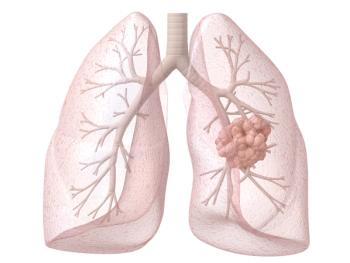
Isatuximab Active in Heavily Pretreated Relapsed, Refractory Myeloma
Monotherapy with the monoclonal antibody isatuximab was effective and well-tolerated in a small study of patients with relapsed and refractory multiple myeloma.
[[{"type":"media","view_mode":"media_crop","fid":"49520","attributes":{"alt":"High-power view of sheets of plasma cells from patient with multiple myeloma","class":"media-image","id":"media_crop_7415554959427","media_crop_h":"0","media_crop_image_style":"-1","media_crop_instance":"5994","media_crop_rotate":"0","media_crop_scale_h":"0","media_crop_scale_w":"0","media_crop_w":"0","media_crop_x":"0","media_crop_y":"0","title":"High-power view of sheets of plasma cells from patient with multiple myeloma","typeof":"foaf:Image"}}]]Monotherapy with the anti-CD38 monoclonal antibody isatuximab was effective and well-tolerated in a small study of patients with relapsed and refractory multiple myeloma.
Data from a phase II dose-finding study showed overall response rates of around 25% in a group of heavily pretreated patients, with similar responses seen in patients with high-risk cytogenetics.
Updated results were presented by Joshua R. Richter, MD, of the Hackensack University Medical Center in New Jersey, at the 2016 American Society of Clinical Oncology (ASCO) Annual Meeting, held June 3–7 in Chicago (abstract
Enrollment in the study required relapsed or refractory disease, treatment with three or more prior lines of therapy, or being double refractory to immunomodulatory drugs and proteasome inhibitors. The 97 patients enrolled were randomly assigned to isatuximab 3 mg/kg every 2 weeks, 10 mg/kg every 2 weeks for 2 cycles then every 4 weeks, 10 mg/kg every 2 weeks, or 20 mg/kg every week for 1 cycle then every 2 weeks. The primary objective was overall response rate.
Patients in the study were heavily pretreated with a median of five prior lines of therapy. About 90% of patients had undergone prior stem cell transplant, and as many as 50% of patients in the study were exposed or refractory to carfilzomib. At the time of data cutoff, 11 patients remained on treatment.
Interim response data have already been presented, Richter noted. The overall response rate was 9% for patients assigned the 3-mg/kg dose; 20% for the 10-mg/kg dose every 2 then 4 weeks; 29% for the 10-mg/kg dose; and 24% for the 20-mg/kg dose every week then every 2 weeks.
At the 10-mg/kg dose given every 2 weeks, there was a 25% very good partial response rate. The median time to response was about a month, which Richter called “very impressive in terms of single-agent activity.”
The researchers also conducted a subgroup analysis that looked at patients given the 10-mg/kg dose or higher. Looking at all patients in these dose groups, the overall response rate was 24.3%. Although each subgroup contained only a small number of patients, Richter said that the results were encouraging. Patients age 70 years or older had an overall response rate of 46.2%. Patients with high-risk cytogenetics had a response rate of 38.1%, and patients with poor renal function had a response rate of 36.4%. An evaluation of treatment response showed median duration of treatment ranging from 8.75 to 12.9 months depending on the dose assigned.
For all patients treated at 10 mg/kg or higher, the median progression-free survival was 3.65 months (95% CI, 2.33–5.55 months).
“As a single agent in a heavily pretreated group, I found this to be quite impressive; however, what I think is even more impressive is looking at the overall survival data,” Richter said.
The median overall survival for this group of patients was 18.63 months.
The most common adverse events that occurred were nausea (27%), fatigue (25%), and cough (25%), but most treatment-emergent adverse events were mild. More than half of patients receiving the drug had infusion-related reactions, but only 3% were grade 3/4 that led to discontinuation.
In her discussion of the results, Suzanne Trudel, MD, of the Ontario Cancer Institute/Princess Margaret Hospital, compared these phase II data with that of a phase II trial of daratumumab, which had similar patient populations, overall response rate, progression-free survival, and overall survival.
“We cannot use, at this point, in this patient population, efficacy or safety data to inform us as to which monoclonal antibody to use,” Trudel said. Choosing between the treatments, she noted, could come down to cost considerations, as well as patient burden of care with regard to treatment scheduling and infusion time.
Newsletter
Stay up to date on recent advances in the multidisciplinary approach to cancer.



















































































